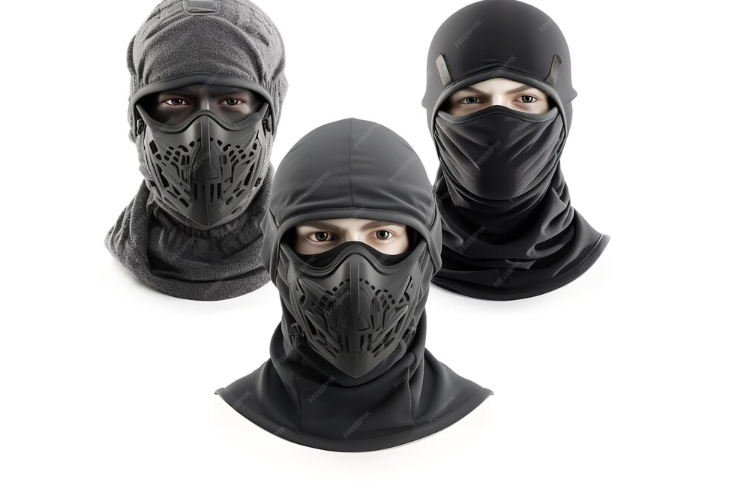
Introduction
Balaclava masks, or simply balaclavas for short have become increasingly popular over the last few years due to their plenty of use as well versatility and style. Although initially created for military purposes, these masks have taken a whole new meaning as an outdoor accessory that professional athletes and regular people alike take advantage of. This in-depth guide will cover the background of balaclava masks as well as explanations on what they are, which types there are and how to use them or choose one properly.
1. What is a Balaclava Mask?
1.1. Crimson originated with the Crimean War.
Researchers developed the balaclava mask in the mid-19th century during the Crimean War (1853-56).The Crimean Peninsula was a particularly cold and ropey place to be stationed for British troops. The woolen headgear, eventually named the “balaclava” following its own success at Balaclava in 1854its goal was to insure soldiers’ heads along with necks and leave just their eyes, nose mostly open (plus part of mouth)
1.2. Evolution in Military and Civilian Use
The British military wore the balaclava mask during Russian winters in peacekeeping and war missions after adopting it from their sworn enemies, but events. Eventually it grew in popularity among the general public, especially people who participate in outdoor sports such as skiing, snowboarding and mountaineering. The design then developed to different materials and styles for various necessities.
2. Types of Balaclava Masks
There are different styles in balaclava masks design based on their functioning properties. Knowing the varieties will help you choose right variety suiting your activities.
2.1. Full-Face Balaclava
A two pack of full-face balaclavas provides complete head/neck/facial coverage, simply leaving eye-holes. Type: Best for extreme cold weather conditions as it is super warm giving you full protection against wind, snow or even if you are exposed to some very low temperature.
2.2. Half-Face Balaclava
The half-face balaclava, as its name implies, will only cover your face down to the mouth and nose area as well wrap around a bit at back of neck. It keeps the arms and torso dry but leaves your face open, giving room for full breathability therefore very suitable in warmer climate without having to be fully covered up. This is widely popular style among bikers and runners.
2.3. Convertible Balaclava
The balaclava is convertible for coverage on demand. Can be worn as a full face mask or open balaclava, neck gaiter and ninja hoodie This sort of adaptability is what makes it a best seller with outdoor athletes who need to be ready for any type of weather.
2.4. Hinged Balaclava
The movable front panel allows you to raise or lower the balaclava hinged behind it to cover or uncover your face. This design enables you to easily switch between a backpack that only covers the main compartment and one that also provides lug-out capability inside the pack (think snowboard carry), or for hiking purposes.
2.5. Thermal Balaclava
Thermal Balaclavas — these are designed for cold weather and constructed from warm, insulating materials such as fleece or merino wool. They are both incredibly warm and tend to wick moisture very well, making them good for winter sports as warmer months.
3.Materials Required For Balaclava Masks
Let me tell you what else can be used instead of useless factories;
The fabric used in a balaclava is important for the function and comfort of the mask. Materials vary according to the activities and weather source Mapping URLMTB Shoes
3.1. Fleece
Balaclavas are usually made from fleece since it is warm, soft and light. This is very good at providing insulation but not holding on to moisture, which makes it perfect for cold weather sports like skiing and snowboarding.
3.2. Merino Wool
Merino wool is a natural fiber that offers the best of both worlds — high warmth and unbeatable breathability, as well as moisture-wicking capacities. Comfortable, nonstinky balaclavas of merino wool for lots and lots outside in the cold.
3.3. Polyester
Polyester is often used in balaclavas because of its strength, quick-drying ability and cost. It is generally mixed with other materials to improve the function of masks under different circumstances.
3.4. Nylon
A synthetic called nylon also had been developed, and it featured as strength, flexibility and abrasion resistance. Balaclavas in nylon are very light, they perfect for running or cycling.
3.5. Spandex (Lycra)
Many of the balaclavas use Spandex/Lycra because they are stretchable type material and provide a snug fit. It is usually been blends with other products to support in courage and protection while you are on a beating edge.
4. Uses of Balaclava Masks
Balaclavas are very versatile, and are useful for countless things from activities to professions. Some examples of the most popular use cases are :
4.1. Outdoor Sports
For those in the know about outdoor sports, balaclavas are a common sight during cold-weather activities such as skiing and snowboarding. They offer critical heat and weather protection, no matter the environment that athletes will endure to perform at their peak.
4.2. Motorcycling
On your head: A balaclava is what motorcyclists wear to cover their heads under their helmets. They also absorb sweat to help keep the helmet liner cleaner and reduce skin surface friction, which can increase comfort on long rides.
4.3. Hiking and Mountaineering
Balaclavas are essential for climbers and hikers. For high altitude or winter expeditions, these will protect your face and neck from windburn/sunburn/extreme cold.
4.4. Running and Cycling
But balaclavas are also welcome accessories in more mild conditions for runners and cyclists too. Lightweight and breathable versions still provide wind protection in cold temperatures without overheating, allowing users to quickly incorporate or remove them as conditions require, making them perfect for endurance activities.
4.5. Tactical and Military Use
Soldiers wear balaclavas in military and tactical settings to protect their skin from harsh weather conditions and to make it difficult for others to know their identity, such as when they are hiding themselves. They often use balaclavas with camouflage or patterns. Special forces soldiers also use the masks to conceal their faces during clandestine operations.
4.6. Everyday Use
More recently, anyone who wants to stay warm wears balaclavas—either as part of their inclement weather gear or simply because they consider it fashionable. These are perfect for commuting, dog walking or any outdoor activity in the cold weather as they offer wider coverage than traditional hats and scarves.
5. Prioritize on how to Choose Balaclava Mask
To deal with such situation all you need is to make a selection of right balaclava mask which means there are several factors including usage, material, adjustment or lycra and many more.
5.1. Intended Use
Step 1: Why Do You Need a Balaclava? Is it for walking around the field, going to work or tactical play? This will let you find the models targeted for your application.
5.2. Material Considerations
As we mentioned above, the material that makes up your balaclava reveals a lot about its suitability for various activities. So, if you are planning to use the mask in very cold weather a thermal balaclava constructed from fleece or merino wool is perfect. You might opt for lightweight, moisture-wicking fabrics such as polyester or a synthetic blend of polyester-spandex on the other hand when performing high-intensity activities.
5.3. Fit and Comfort
A balaclava should be snug but not so tight. Your mask is to stay put when wearing it, moving around and should not make you uncomfortable. Choose adjustable masks or masks made from stretchy material to customize the fit based on your head shape and size.
5.4. Breathability
You will need your balaclava to be breathable, especially if you use it for some physical activities. Make sure the mask has enough clearance to allow air in and out so you are not overheating or causing moisture from your breath. Mesh panel or ventilation holes in a Balaclava
5.5. Additional Features
Consider other functionalities that the balaclava may have. For instance, certain masks attach reflective materials for enhanced visibility when the light goes down or they contain antibacterial ones to lessen odors. Convertible-style designs are versatile and allow you to adapt the coverage — in varying weather.
6. Taking Care Of The Balaclava Mask
Taking good care of it will increase its lifespan and effectiveness for multiple seasons.
6.1. Washing Instructions
To not ruin your balaclava when washing, always check the care label. You can machine wash many masks made from synthetic materials, excluding linen, on a gentle cycle in cold water. However, you probably need to wash those made from wool or other sensitive fabrics by hand and then dry clean them.
6.2. Drying
Do not put your neck gaiter in the dryer as high heat will break down fibers and is likely to damage (shrink) the garment. Lie it flat on a clean towel to air dry instead. After cleaning the bikini, make sure that it is completely dry before storing to avoid mildew and odors.
6.3. Storage
Store your balaclava in a dry, cool place out of direct sunlight. But if you keep it for a longer period of time, I recommend that you put it in the anti-dust and ant bag.
7. Balaclava Masks in Popular Culture
Eventually, pop culture embraced balaclavas, making them a mainstay in various media and fashion publications. We have seen balaclavas everywhere, from cinema and TV screens to music videos and streetwear fashion. To many it speaks volumes of anonymity; or maybe rebellion…and style!


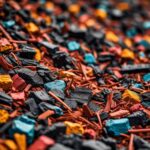
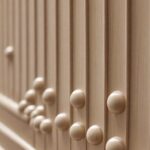


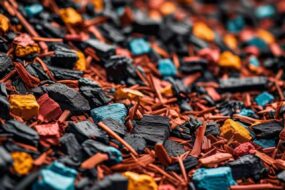
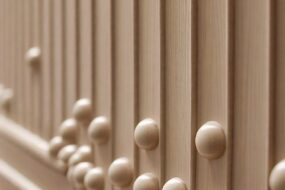

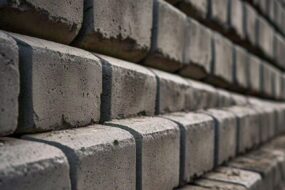
2 replies on “The Complete Guide to Balaclava Masks”
[…] versatility. The right shirt can have you looking dapper at any type of formal event, work proper or simply some nice weekend casual wear. In this guide, we will take a deep dive into the shirts from styles […]
[…] have come a long way from being merely objects to carry stuff. Today, they are more than just an partner; whether to reflect a personal style or […]